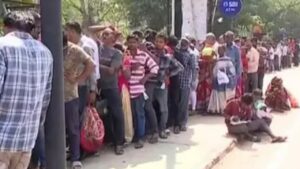Bibek Debroy writes: BIMARU states are breaking poverty’s chains
2 min read
There are multiple ways to define and measure poverty. Conventionally, poverty has been defined as percentage of population below a poverty line, the so-called head-count ratio. The current official poverty line is still the Tendulkar one. The Rangarajan one wasn’t formally accepted. Since there aren’t any NSSO (National Sample Survey Office) surveys on consumption expenditure after 2011-12, we are stuck with the incongruous situation of no head-count ratios after 2011-12. Meanwhile, down the years, developmental economists have argued poverty is multi-dimensional. Hence, we transited through physical quality of life indicators and the human development index (HDI), before zeroing in on the currently favoured MDPI (multi-dimensional poverty index).
MDPI is more like a development index. It is based on three dimensions of poverty – health, education and living standards. Health (nutrition, child and adolescent mortality, maternal health) and education (years of schooling, school attendance) are important objectives of development and undoubtedly influence the future poverty of the individual. However, these should be on a somewhat different footing from living standards (cooking fuel, sanitation, drinking water, electricity, housing, assets, bank accounts). Living standards do reflect poverty. The inclusion of health and education makes the word “poverty” elastic. But, when the poor have cried, many who are not Caesars have also wept. Therefore, we have this broad notion.
Following UNDP’s global report, Niti Aayog recently brought out India’s MDPI report for 2023. In both cases, improvements are primarily driven by NFHS-5. The UNDP report said 415 million people moved out of poverty between 2005-06 and 2019-21 and incidence of poverty declined from 55.1 per cent to 16.4 per cent. With no consumption expenditure data after 2011-12, different people have tried to estimate head-count ratios in various ways with varied assumptions. The modal value will be between 15 per cent and 20 per cent, though some outliers have a lower number. In other words, no matter how much sophistication one brings in head count versus MDPI, the poverty number will be around 15 per cent of the population. In passing, UNDP makes the comment that the fastest declines have been in poorer states. But UNDP’s report is for all of India, in the aggregate. With inter-regional and inter-state differences, the Niti report disaggregates. Poverty ratios declined from 24.85 per cent in 2015-16 to 14.96 per cent in 2019-21. (The slight difference in the 2019-21 numbers between the two reports is because of minor differences in indicators.) Between those two end-points, an estimated 135.5 million Indians exited poverty. That’s a huge number, and extrapolated, has implications not only for India achieving the relevant SDG target (specifically target 1.2), but also for the world as a whole. Of that, 34.3 million was the figure in UP alone.







